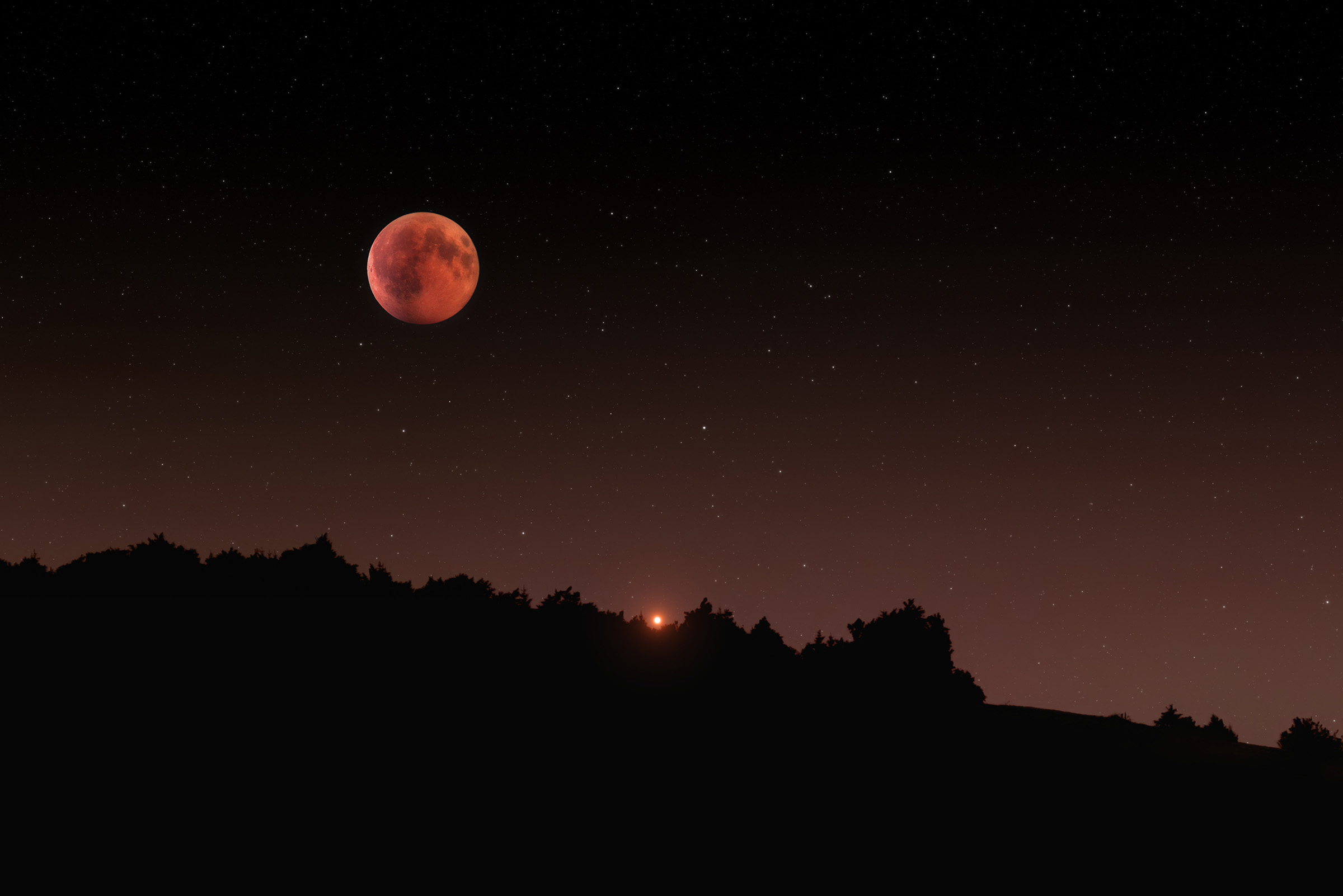Supermoon Eclipse: When To Watch And What To Expect
September's full moon will fill the sky tonight, but we'll also be treated to a rare supermoon eclipse this evening, as the Earth's shadow covers part of the Moon's surface. Here's everything you need to know about this beautiful cosmic event and how to make sure you don't miss it.
This eclipse is just one of two that will happen between now and November. The second will be an annular (ring) eclipse of the sun, closing out the latest eclipse season. The Harvest moon, the full moon closest to the autumn equinox, happens to be coming right at the point before that solar eclipse, allowing it to be partially hidden from view. And, because September's full moon is a supermoon, it'll be even more special than a regular partial lunar eclipse.
A partial lunar eclipse isn't anything especially spectacular if you've already seen one, but this particular eclipse isn't something you'll want to miss as supermoon eclipses are actually quite rare. The eclipse will be visible throughout most of North America (with the exception of Hawaii and Alaska). It'll also be visible throughout all of South America.

As noted before, this eclipse is only going to be a partial lunar eclipse. That means that it will only cover around 8.7 percent of the moon's uppermost section during the maximum eclipse. However, because it will be a supermoon, the affected area may actually look larger. That means the Earth's shadow won't completely blot out the sunlight that typically lights up the surface of the moon.
Because it's a supermoon eclipse, though, you'll easily be able to see it with or without a telescope, as the curve of the dark umbra on the lunar surface will be clearly visible. Next year, we'll also get two total lunar eclipses, including one in March and another in September. So, while this will only be a partial lunar eclipse, you won't have to wait too long to see a total lunar eclipse.
